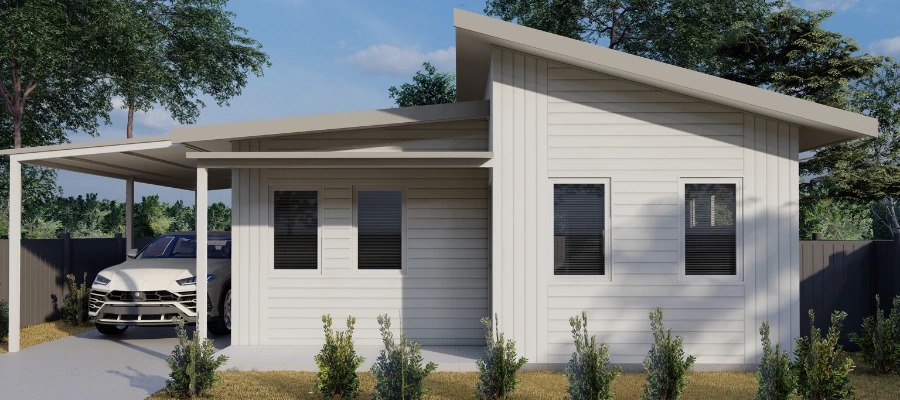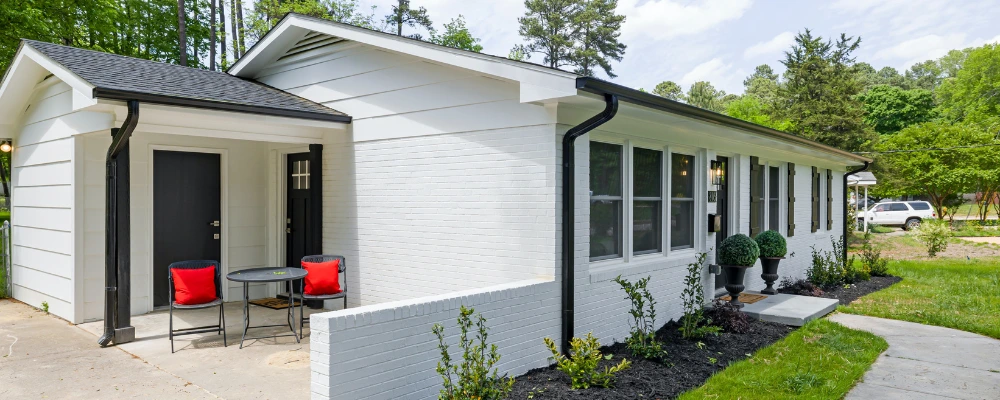Do you live in a single-family home with a wide plot area? If so, you might consider adding extra living space by building an Accessory Dwelling Unit (ADU). An ADU allows you to create a separate living area on the same property—such as an in-law suite, a she-shed, or other flexible spaces. This type of unit offers a private yet connected environment, helping to support the well-being of those who live there.
Read this blog to learn more about accessory dwelling units and how they can enhance your living space.
What is an Accessory Dwelling Unit (ADU)?
ADU meaning can be understood as an accessory dwelling unit (ADU), which is another residential unit built on the same plot as the main building. These ADU houses are commonly called secondary dwelling units, granny flats, carriage houses, and laneway houses as per their use.
ADUs are often built for the sake of additional living space for workers, guests, elders, or personal space (like a Man cave and She-shed). You can also use these ADUs to generate rental income. However, you cannot purchase or sell these ADUs separately.
What are the Different Types of ADUs?
There are various types of ADUs. Some major types are as follows:
Detached ADU
As the name suggests, these are free-standing or detached dwelling units built on the same lot as the primary single-family home. This independent livable space commonly involves a basic kitchen, bedroom, bath and living room. These ADUs are best suited for people requiring privacy. An example of this type of ADU is a backyard cottage.
Attached ADU
As the name suggests, these ADU constructions involve at least a single wall sharing with the main building. This dwelling option makes use of the main building’s existing structure to add additional housing options. Examples of this type of ADU are a basement apartment and garage conversion.
Internal ADU
An internal ADU will be created by converting existing spaces inside a home, like a basement, attic, or unused ground-floor room, into a separate living unit. This will be the best and most cost-effective option to create an additional living space. Here, you don’t have to work more for new construction work.
Benefits of Building an ADU in India

Better Property Value
The inclusion of ADUs is futuristic and helpful during the pandemic situation. Thus, they are considered a valuable type of home improvement that enhances overall marketability. Compared to other single-family units, buildings with ADUs stand out from their peers during a house review or appraisal.
Parallel Income
You can generate a parallel income by renting your ADU to long-term tenants, vacationers, or even 1-2-person households. With minimal upkeep, you can generate consistent revenue.
Additional Living Space
If multigenerational families live as a joint family, these ADUs offer sufficient privacy. You can also use this as guest suites, home offices, hobby studios, or houses for workers.
Cost of Building an ADU in India
The ADU construction cost in India in 2025 typically ranges from ₹1,900 to ₹2,500 per square foot. This price depends on several factors, such as the quality of materials used, the location of the property, and the complexity of the design. The estimated cost covers all major aspects of construction, including the structure itself, interior finishes, electrical and plumbing work, and final touches. In metro cities like Chennai, Mumbai, and Bangalore, costs are usually higher because both labour and materials are more expensive. Opting for premium materials or a more complex architectural design can also increase the total cost. However, if you choose to build a prefabricated ADU or convert an existing garage into an ADU, the overall expenses can be significantly lower, making these options more budget-friendly.
How to Build an ADU? Design & Construction Tips
Space Optimization: Before starting the ADU construction, you need to check whether your plot has enough space to include an ADU. ADU floor sizes typically range from around 400 sq ft for a compact one-bedroom unit to 1200 sq ft for a larger, multi-bedroom ADU. For a 1-bedroom ADU, sizes can range from 400 sq ft to 750 sq ft, depending on desired living space.
Site Preparation: Take a proper land and structural analysis to make sure your site conditions are normal. If not, make the site level with a minimum slope to enable the flow of water after heavy rain. Make sure to keep a minimal built-up area.
Decide the type of ADU: You need not construct an ADU using typical construction methods; you can include an A-frame house, container home, manufactured home, or any other budget-friendly type.
Design ADU: Design your ADU unit as per your requirement for use. You can hire an architect or a construction company to create the best functional ADU plan. And maintain minimum height, ventilation and light.
Construction: The construction company can take charge of your suitable type of ADU and make sure to offer the best results.
Utility Connections: You need to install an MEP Package (mechanical, electrical and plumbing engineering package). As it controls the main functionality of the house.
Living Space Requirements: If you have a limited space that is being used for your accessory dwelling unit, you should consider mainly storage spaces like closet space, the size of your appliances, and space for furniture. It can help you to avoid cramped spaces. Avoid using big, bulky furniture.
Challenges & Solutions for ADU Owners in India
Legal Hurdles (Zoning Restrictions)
India does not have a national ADU policy. Local municipal laws (such as those in Delhi, Mumbai, Bengaluru, etc.) may not formally recognise ADUs as a distinct category. Adding a second unit on a residential plot often requires special permission, and zoning regulations can be unclear or restrictive. Owners may need to seek building plan approvals and comply with Floor Area Ratio (FAR) limits, which can be a significant barrier.
Maintenance & Management (If Rented Out)
Renting out an additional unit (like an ADU) is common in Indian cities. However, it comes with responsibilities such as tenant verification (as required by the local police), regular maintenance, and handling any disputes. To ensure smooth management, it’s important to have a legally valid rental agreement, perform timely maintenance, and maintain proper documentation.
Utility Connections (Separate Meter for Tenants):
Getting separate electricity and water meters for an ADU home is possible in many Indian cities, but it usually needs approval from the municipal authorities and may involve delays due to paperwork. In many cases, tenants use the main household connection, and utility costs are shared based on a mutual agreement between the owner and the tenant.
ADU vs Independent House: Key Differences
| Point of Difference | ADU (Accessory Dwelling Unit) | Independent House |
| Basic Meaning | An ADU is a small, separate home built on the same land as a main house. It can be attached, detached, or part of the main house, but it always has its own entrance, kitchen, and bathroom. | An independent house is a stand-alone home built on its own plot of land. The owner has full control over both the house and the land. |
| Ownership | The owner of the main house also owns the ADU. The ADU cannot be sold separately from the main house. | The owner completely owns both the house and the land. It can be sold or transferred to anyone independently. |
| Privacy | ADUs offer a good amount of privacy because they have their own entrance and living facilities, but they are still on the same property as the main house. | Independent houses offer maximum privacy because the building and land are not shared with anyone else. |
| Space | ADUs are usually smaller in size, often limited by local rules (for example, 400–1200 sq ft). They are suitable for singles, couples, or small families. | Independent houses are usually much larger, with more rooms and open spaces like gardens or yards. They suit bigger families. |
| Use Cases | ADUs are ideal for renting out for extra income, housing elderly parents, adult children, or guests. They can also be used as a home office or for caregivers. | Independent houses are best for families who want their own space, freedom to build or expand, and long-term investment. |
| Cost | Building an ADU is cheaper than buying a new house, as it uses existing land and sometimes shares utilities. | Buying or building an independent house is more expensive because you pay for both the land and the construction. |
| Rental Income | ADUs can be rented out for extra income, but only as part of the main property. | Independent houses can be rented out as a whole, usually earning higher rental income. |
| Maintenance | Maintenance is usually lower, as the ADU shares some infrastructure with the main house. | Maintenance is higher, as the owner is responsible for the entire property and land. |
In conclusion, adding an Accessory Dwelling Unit (ADU) is a smart way to make better use of your land, especially in urban Indian settings. Whether for extra income, a private space for family, or a compact home office, ADUs offer flexibility without the cost of buying new land. With proper planning, legal permissions, and thoughtful design, you can create a functional, stylish unit that meets your needs. Although there may be challenges in utility setup and local approvals, the long-term benefits—such as increased property value and added space—make ADUs a practical and future-ready solution for modern homeowners.

